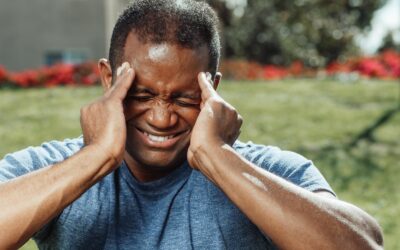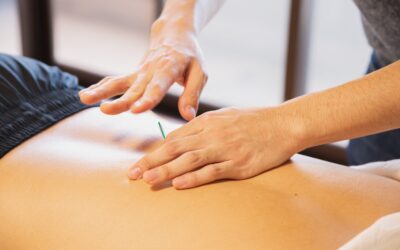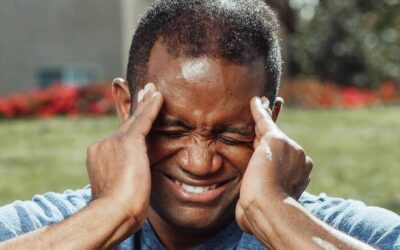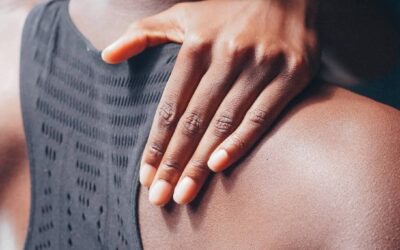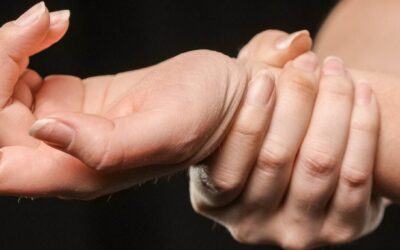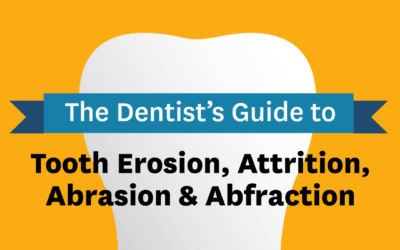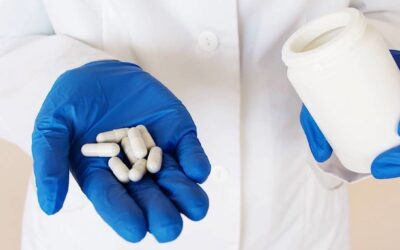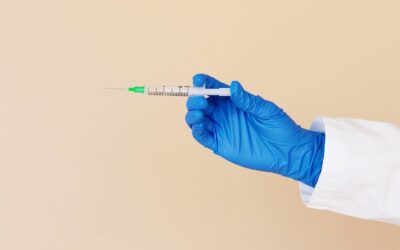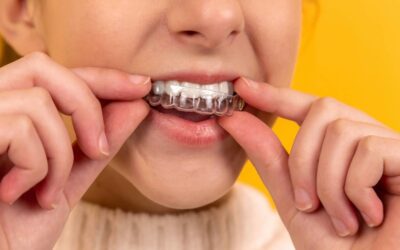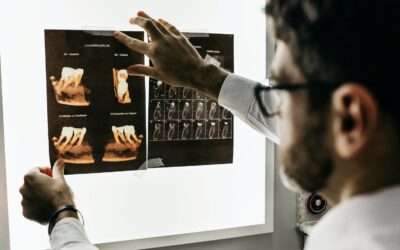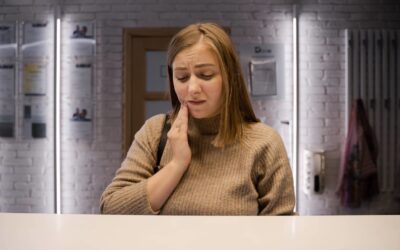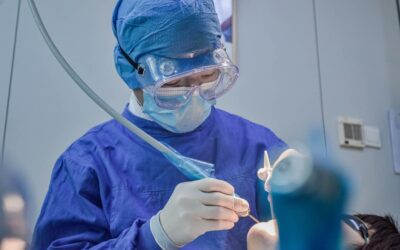Q: What is chronic non-malignant pain [CNMP]? A: Nonmalignant, chronic pain (>6 months) is due to remodeling within the central nervous system. This central neural plasticity results in persistent pain even after correction of pathology. It is characterized by...
Dr. Glenn Clark
Does Acupuncture Really Work For Pain?
Q: I know that injections are commonly done to relieve pain. Is this a legitimate evidence-based treatment method with some long-term benefits for the chronic pain patient? A: A variety of needle-based and injection-based interventional therapies exist for chronic...
Physical Medicine and Primary Headache Pain Disorders
A headache can be a small effect of a bigger primary headache disorder. These disorders include migraines, tension type headaches, cluster headaches, or medication-overuse headaches. There are treatments both with and without the use of physical medicine. Treatment...
Causes of Multiple Sclerosis
Multiple sclerosis (MS) is an autoimmune disease that affects the central nervous system, specifically the brain and spinal cord. This disease affects women twice the amount as men. Onset commonly occurs between ages 20 and 50 years. There are many negative...
Three Types of Sympathetic Maintained Pain
The idea that sympathetic pain exists is based on clinical findings seen in a small subset of patients suffering from neuropathic pain. Sympathetic pains occurs when the pain is clearly dependent on activity in the sympathetic nervous system. This is often referred to...
How to Treat and Prevent Medication Overuse Headaches
Over 1.5% of the population experiences Medication Overuse Headaches (MOH). This type is the most common migraine-like headache. People with MOH experience pain over 15 days each month. MOH ranges higher in women (2.6%) and people over 50 years of age (nearly 5%)....
Alternative Medications to Uncommon TMJ Disorders
Motor Neurectomy Motor neurectomy involves identifying the select branches of the motor nerve and perform radiofrequency lysis of the motor nerve itself. This will denervate a portion of the motor nerve and cause a resulting atrophy of the muscle. The area of the...
Ankylosis and Facial Asymmetry Disorders
High Condylectomy & Temporal Fascia Graft In cases where the jaw opening ability is severely compromised due to ankylosis, it is necessary to perform surgical treatment of the TM joint. This involves a high condylectomy (removing approximately 4 mm on top of...
7 Imaging-Based Diagnostic Tests for TMJ Disorders
1. Jaw Bone Scan with Radionucleotide Bone scans are utilized to assess bone tissue growth. It is an older technology and less specific technology (2D) than SPECT (3D), but it still has a role in diagnosis of bone scan. After the injection of the nucleotide, a gamma...
How to Diagnose and Treat Oral Motor Disorders
1. Trismus Trismus occurs when there is an involuntary restriction of active opening (<38mm) due to abnormal or inappropriate closer muscle activity during opening movement. This is called a co-contraction disorder; openers and jaw closers are contracting at...
How to Diagnose 7 Maxillary Growth Disorders
Below is an overview of seven common and uncommon maxillary growth disorders including severe skeletal malocclusion, unilateral hyperplasia, condylar hypertrophy, condylar hypoplasia, condylar neoplasia, masticatory muscle hypertrophy, and muscular neoplasia. 1....
Dentist’s Guide to Tooth Erosion, Attrition, Abrasion & Abfraction
Learn how to diagnose, monitor, and treat different types of tooth wear including erosion, attrition, abrasion, and abfraction with this infographic based on Dr. Glenn Clark's course on abnormal oral physiology and sensory disorders. Want a full copy of the...
4 Mandibular Mobility Disorders
1. Muscle Contracture Muscle contractures are abnormal reductions in the extensibility of the jaw muscles (usually the closers). Contractures can result from a trauma induced scar, a spontaneous slowly developing shortening of the muscles without enlargement, or a...
Commonly Used Medications For Temporomandibular Disorders
1. NSAIDs The orofacial pain conditions for which NSAIDs are prescribed include acute arthralgia (capsulitis), arthritis, and painful locked TMJ. Although there are many options, and the clinician has to select which best suits each patient, three NSAIDs are...
TMJ Injection Treatments: Lidocaine, Steroids, Hyaluronate & Botox
Lidocaine Trigger Point Injections When myofascial pain is a component of the pain problem, a trigger point injection is helpful in treatment, but only after the patient demonstrates ability and compliance with the home stretching protocol. These injections are used...
Appliance-Based and Occlusion-Based Treatments for TMJ
Occlusal Appliances Occlusal guards have several purposes. The guards can protect the teeth from wear such as attrition, interrupt oral habits such as clenching, redistribute forces of sore and sensitized teeth, and establish a comfortable occlusal position in a...
TMJ Manipulation & Mobilization Treatments
Open Locking TMJ Manipulation This procedure is done to reduce open locking or open dislocation of the TMJ, and it can be done in one of two ways. One method includes grasping the jaw with both hands and placing the molars on the posterior molar teeth and the fingers...
Home-Based Physical Therapy Treatments for the TM Joint
The Myalgia or Myofascial pain protocol (MFP) is a self-directed home-based (and sometimes office-based) treatment approach, which includes several elements such as identifying and avoiding activities that are potentially harmful to the jaw system, increasing local...
Preventive and Avoidance-Based Temporomandibular Treatments
Preventive and avoidance-based treatments to combat or resolve temporomandibular disorders are essential to relieving chronic pain. These procedures can be administered based on the circumstances or levels of pain. Self-limiting disease or non-progressive pain is an...
Diagnostic Tests for Temporomandibular Disorders
In this article we'll explore three primary tests to help diagnose temporomandibular disorders: Imaging tests Physical medicine tests Serologic tests 1. Imaging Tests A. Panoramic Radiographs A panoramic radiograph is utilized primarily to have a general vision of the...
Arthritic Temporomandibular Joint Disorders
Arthralgia or Capsulitis Arthralgia/Capsulitis is defined as a painful joint (even without any osseous changes) with increased tenderness to palpation pressure. The clinical history and examination evidence needed for this diagnosis includes: A unilateral or bilateral...
Internal Derangements of the Temporomandibular Joint
Internal Derangement is not a diagnosis but a category of conditions and it simply means abnormal function of the intra-articular structures. It is a non-specific term applied as a descriptive subdivision term for the group of non-arthritic TM joint disorders (e.g.,...
How to Diagnose Masticatory Muscle Disorders
Localized Myalgia Localized myalgia is a term used to describe a dull aching continuous which the patient localizes to muscles in the masticatory system (usually the masseter and temporalis) or cervical muscles (SCM and trapezius). If the myalgia is in...
How to Perform a Jaw Bone Biopsy
What is a jaw bone biopsy? When you use the term “bone biopsy,” this could mean you are taking a piece of bone or you are taking tissue that resides inside a bone. There are two approaches for a bone biopsy. A closed/needle bone biopsy involves inserting a...

